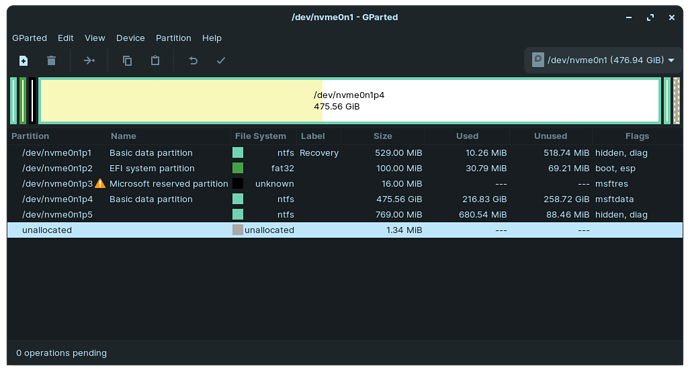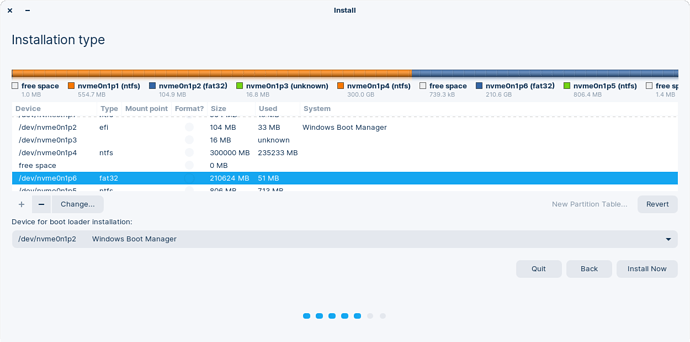I think Zorin group @zorink @AZorin should consider to implement auto-reply in their mailbox. Even if it were a machine generated reply, users at least know the message got thought to the other end.
Honestly... nVME and eMMC both are troublesome with Linux. It used to be that the general agreement was that Linux would never work on eMMC. And for good reason. It is closer to an SD card in form and function, than it is to a standard SSD.
In the last year and a half alone, a lot of progress has been made. Many people are able to flawlessly install Linux on nVME and eMMC. But for many, it still is like pulling teeth.
In your EFI settings, are you set to AHCI or RAID?
EFI settings - Secure Boot must be disabled.
In Windows - Fast Start Up in control panel > power settings (somewhere) must be disabled.
Fastboot has been deactivated already and I don't know how to find AHCI or RAID in my EFI settings. What I read about it, is that AHCI is not compatible with NVMe drives. So I guess it is RAID then??
The funny thing is, that the NVMe drive appears in the manual installation mode in the Zorin installer. So I could technically choose it but I don't know how to partition it properly.
The other thing I was thinking was: What if I make the "Basic data partition" smaller by booting into gparted and have that space unallocated? Would that screw up my Windows partition? Would Zorin then recognize it?
Yep. And if as you indicate below, it is already running Windows, it is safe for now to assume it is set to RAID.
Yes, you can do this.
There is no logical reason that it should.
I know a way to find out. ![]()
If you do the above, I would say it is worthwhile to set up and choose the partition you want Zorin installed to- then reformat it to FAT32. After that is complete, then run the Zorin OS Installer on that partition.
OK, I will give it a try. Thanks for the detailed answer 
So, I will reformat it to FAT32. Shall I choose "primary" or "logical" partition? Do I leave "Mount point" off or should it be /dos or /windows? Sorry, I don't have the faintest idea of what all of that means...
Go with default for Primary or Logical.
Mount point you can set to just /
Now I have 200GB in a new FAT32 partition and the drive still doesn't show up in "alongside Windows".
If I chose to install Zorin on that partition, would I then choose my NVMe drive for boot loader installation? Does that ensure, that I will be able to dual boot?
Yes, the same drive Windows is on.
Not on the windows partition, of course.
I'm sorry... My poor brain may be stumbling here.
Is the drive you are trying to install Zorin Onto not showing up? Or the partition?
No worries, my brain is crushed and you are helping getting the pieces back together. 
So, the drive is not showing up when choosing "install alongside Windows"
But the drive and all of the partitions are showing up nicely if I choose "Something else".
I am just not sure to where exactly to put the boot loader. I could either choose directly the drive /dev/nvme0n1 or the new fat32 partition /dev/nvme0n1p6
Bootloader goes to the EFI partition that is FAT32.
If it is showing in Something Else, then I guess your options are to use "Something else" or to instead use "Something else."
-scratches head-
Can you just check, in your BIOS, that you are using UEFI and that Legacy ROM/Boot is turned off.
Then when you reboot and press F12 (or whatever it is for your BIOS) to the boot selection, that you see Zorin as a boot option?
If you don't see the Zorin option then it is the same problem I encountered and fixed by doing this:
Alright, so just to clarify before I commit...
This is what I would choose:
The EFI partition is called "Windows Boot Manager". That is just the name though, I suppose. No problem installing the boot loader on the same partition?
Thank you @Rory !
I am not sure, that this post is related to my problem, though. It's not that I can't boot Zorin from the USB. That works without any problem. I can run it live and access the partitioning options and everything. It is just during the installation of Zorin that after the step "install alongside Windows" it won't recognize the NVMe drive.
Others have posted having this same trouble. Rory did, as well:
As I recall, many were using nVME, too.
I have nvme, and never had issues with Linux
Oh sorry! Now I understand it has to do with detecting the Windows 10 installation and not just the hard drive? Alright, then I will give it one more chance following all the steps. Thanks for clarifying!
Reading Rory's post, it looks like he covered both issues in one post.
Yes, I could easily install Zorin on the NVMe, but I am having issues with the dual boot install. So it's kind of a Windows issue 
Yes, I had lot of issues with dual boot..
And fix is only one..SWITCH TO LINUX 
timothys_monster, this was also a similar case for me, though my drive is SSD. The thing is, I could install Zorin from the Balena etcher flashed USB but only if I enabled Legacy ROM option in the BIOS, even though it still boots using UEFI mode it allows Legacy ROM to work. When the Zorin install routine ran it simply refused to recognise my EFI drive and as such didn't recognise my Win10 installation.
The trouble was the Balena etcher flashed USB will boot both UEFI and Legacy, so it was misleading me.
After talking with Aravisian I tried Rufus etcher and couldn't even boot no matter whether trying UEFI/Legacy ROM disabled or UEFI/Legacy ROM enabled.
It was then only when the Zorin chaps came up with a fix that Aravisian potsed that I realised that grubx64.efi was not present on the Rufus flashed USB. However, it was present on the Balena flashed USB
So then when I turned off Legacy ROM in the BIOS and used the fix, because the Zorin boot option was not automatically recognised and had to be added in to the BIOS boot option, lo and behold the Zorin boot option appeared at boot time, the install ran and more importantly it did recognise my efi partition and did recognise the Win 10 partition so that I could select 'Install Alongside Windows' and dual boot my system.
EDIT: I should add that the key things for me were this:
- That UEFI is used, with Legacy ROM disabled (as well as Secure Boot)
- That I was using an iso flashed USB that contained grubx64.efi
- That once I created a Zorin named boot option in my BIOS which specified grubx64.efi, from the USB flashed drive, as the file to use.....everything went well and I ended up with a dual boot system.

